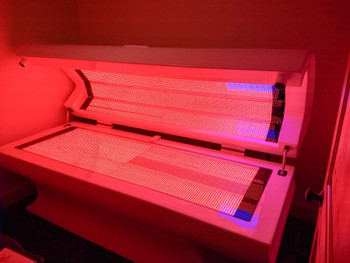Description
15 to 30 Minutes session with DIAMAG ( Almag 03) - PEMF Transcranial magnetic stimulation (TMS) is a noninvasive procedure that use magnetic fields to stimulate nerve cells in the brain. The therapeutic effect of the ALMAG 03 due to the use of a pulsed magnetic field. The effectiveness of techniques are proven by clinical studies. Use of transcranial magnetic stimulation device requires no special medical education. Diamag provided with instructions for use, a list of indications and contraindications for use. Manufacture Rep, Almagia International, provides quality service and maintenance, and provides a full guarantee on all products. A Transcranial magnetic stimulation device:
- Stabilizes vision in patients with chronic iridocyclitis;
- Relieves pain in patients with migraine;
- Effective in the acute and subacute period of stroke;
- Improves the quality of life of patients with Parkinson’s disease.
INDICATIONS FOR USE TRANSCRANIAL MAGNETIC STIMULATION MACHINE
- Osteochondrosis of the cervical spine with symptoms of cranialgia, cephalgia;
- sleep disturbances;
- The effects of suffering a cerebrovascular accident;
- Parkinson’s disease;
- Chronic cerebral ischemia;
- Transient ischemic attack;
- Chronic iridocyclitis;
- Migraine neuralgia, migraine.
TECHNICAL CHARACTERISTICS OF THE INDIVIDUAL TREATMENTS DISEASES OF THE BRAIN:
- Migraine, migraine neuralgia;
- Transient ischemic attack;
- The effects of deferred cerebrovascular;
- Chronic cerebral ischemia.
CHRONIC IRIDOCYCLITIS
The position of the radiator color: cables input located on the back of the head, on the projection of the extreme inductors eye, the other – on the edge of the ears. For the treatment use the Program №3. The maximum consecutive days of treatment is 20 days. The frequency of treatments is once per day. The course can be repeated after 1.5-2 months. Parkinson’s disease The position of the radiator color: cable entry located on the occipital region, inductors extreme – on the forehead. For the treatment use the Program №4. The maximum consecutive days of treatment is 20 days. The frequency of treatments is once per day. The course can be repeated after 1,5 – 2 months. Sleep disorders The position of the radiator color: cable entry located on the occipital region, inductors extreme – on the forehead. For the treatment use the Program №1. The maximum consecutive days of treatment is 20 days. The frequency of treatments is once per day. Duration of treatment may be extended under the guidance of the attending physician.CONTRAINDICATIONS FOR USING TRANSCRANIAL MAGNETIC STIMULATION DEVICE
- Alcohol and mental excitement;
- Active tubercular process;
- Respiratory failure;
- Malignant neoplasms;
- Hyperthyroidism;
- Tendency to bleeding;
- Pacemaker;
- Systemic blood diseases;
- Cardiac aneurysm;
- Aortic aneurysm, other large vessels;
- Pregnancy;
- Acute purulent processes in the head;
- Cardiac arrhythmias;
- Thrombocytopenia, coagulopathy, bleeding;
- Infectious diseases in the acute stage
- Fever
INSTRUCTIONS FOR USING TRANSCRANIAL MAGNETIC STIMULATION DEVICE
- Connect ALMAG 03 (TMS Machine) to the electrical outlet. The display unit should reflect the number of the last of the methodology used.
- Press the “Program” find the desired item and confirm.
- Install the transducer according to section “Procedures of the treatment.” To the side of the affected area to direct the work surface with the marking N.
- Press the “Start / Stop”.
- When the desired treatment time is counted, a beep sounds.
- Disconnect the device from the network.
CLINICAL TRIALS WERE CONDUCTED:
- MBUZ GKB №31 of Moscow, is the clinical base of the Scientific Research Institute of cerebrovascular disease and stroke GOU VPO Russian State Medical University, which proved the clinical efficacy and safety of the device in the acute phase of stroke;
- MBUZ neurological department of city hospital №4 Vladimir, where proved the feasibility of the device for stroke, migraine, sleep disorders;
- Resorts’ Solotcha “- clinical basis RyazGMU Medical University, where proven clinical efficacy of rehabilitation using the device in patients with Parkinson’s disease, the recovery of stroke patients, patients with chronic iridocyclitis.






